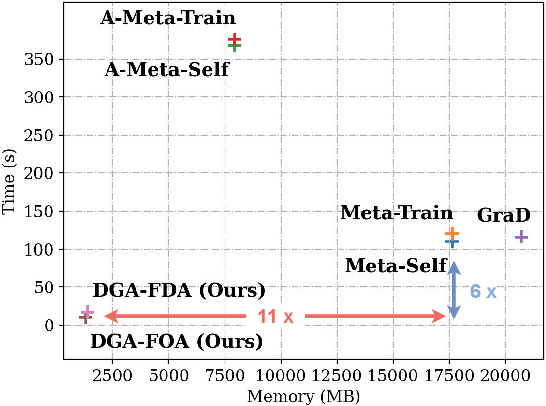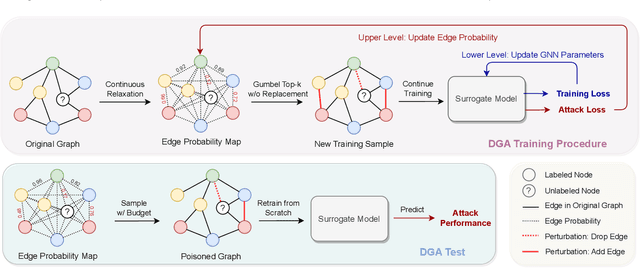Haoran Liu
MKG-Rank: Enhancing Large Language Models with Knowledge Graph for Multilingual Medical Question Answering
Mar 21, 2025Abstract:Large Language Models (LLMs) have shown remarkable progress in medical question answering (QA), yet their effectiveness remains predominantly limited to English due to imbalanced multilingual training data and scarce medical resources for low-resource languages. To address this critical language gap in medical QA, we propose Multilingual Knowledge Graph-based Retrieval Ranking (MKG-Rank), a knowledge graph-enhanced framework that enables English-centric LLMs to perform multilingual medical QA. Through a word-level translation mechanism, our framework efficiently integrates comprehensive English-centric medical knowledge graphs into LLM reasoning at a low cost, mitigating cross-lingual semantic distortion and achieving precise medical QA across language barriers. To enhance efficiency, we introduce caching and multi-angle ranking strategies to optimize the retrieval process, significantly reducing response times and prioritizing relevant medical knowledge. Extensive evaluations on multilingual medical QA benchmarks across Chinese, Japanese, Korean, and Swahili demonstrate that MKG-Rank consistently outperforms zero-shot LLMs, achieving maximum 35.03% increase in accuracy, while maintaining an average retrieval time of only 0.0009 seconds.
GraphCheck: Breaking Long-Term Text Barriers with Extracted Knowledge Graph-Powered Fact-Checking
Feb 23, 2025Abstract:Large language models (LLMs) are widely used, but they often generate subtle factual errors, especially in long-form text. These errors are fatal in some specialized domains such as medicine. Existing fact-checking with grounding documents methods face two main challenges: (1) they struggle to understand complex multihop relations in long documents, often overlooking subtle factual errors; (2) most specialized methods rely on pairwise comparisons, requiring multiple model calls, leading to high resource and computational costs. To address these challenges, we propose \textbf{\textit{GraphCheck}}, a fact-checking framework that uses extracted knowledge graphs to enhance text representation. Graph Neural Networks further process these graphs as a soft prompt, enabling LLMs to incorporate structured knowledge more effectively. Enhanced with graph-based reasoning, GraphCheck captures multihop reasoning chains which are often overlooked by existing methods, enabling precise and efficient fact-checking in a single inference call. Experimental results on seven benchmarks spanning both general and medical domains demonstrate a 6.1\% overall improvement over baseline models. Notably, GraphCheck outperforms existing specialized fact-checkers and achieves comparable performance with state-of-the-art LLMs, such as DeepSeek-V3 and OpenAI-o1, with significantly fewer parameters.
Hierarchical Contextual Manifold Alignment for Structuring Latent Representations in Large Language Models
Feb 06, 2025Abstract:The organization of latent token representations plays a crucial role in determining the stability, generalization, and contextual consistency of language models, yet conventional approaches to embedding refinement often rely on parameter modifications that introduce additional computational overhead. A hierarchical alignment method was introduced to restructure token embeddings without altering core model weights, ensuring that representational distributions maintained coherence across different linguistic contexts. Experimental evaluations demonstrated improvements in rare token retrieval, adversarial robustness, and long-range dependency tracking, highlighting the advantages of hierarchical structuring in mitigating inconsistencies in latent space organization. The comparative analysis against conventional fine-tuning and embedding perturbation methods revealed that hierarchical restructuring maintained computational efficiency while achieving measurable gains in representation quality. Structural refinements introduced through the alignment process resulted in improved contextual stability across varied linguistic tasks, reducing inconsistencies in token proximity relationships and enhancing interpretability in language generation. A detailed computational assessment confirmed that the realignment process introduced minimal inference overhead, ensuring that representational improvements did not compromise model efficiency. The findings reinforced the broader significance of structured representation learning, illustrating that hierarchical embedding modifications could serve as an effective strategy for refining latent space distributions while preserving pre-learned semantic associations.
Issues with Neural Tangent Kernel Approach to Neural Networks
Jan 19, 2025


Abstract:Neural tangent kernels (NTKs) have been proposed to study the behavior of trained neural networks from the perspective of Gaussian processes. An important result in this body of work is the theorem of equivalence between a trained neural network and kernel regression with the corresponding NTK. This theorem allows for an interpretation of neural networks as special cases of kernel regression. However, does this theorem of equivalence hold in practice? In this paper, we revisit the derivation of the NTK rigorously and conduct numerical experiments to evaluate this equivalence theorem. We observe that adding a layer to a neural network and the corresponding updated NTK do not yield matching changes in the predictor error. Furthermore, we observe that kernel regression with a Gaussian process kernel in the literature that does not account for neural network training produces prediction errors very close to that of kernel regression with NTKs. These observations suggest the equivalence theorem does not hold well in practice and puts into question whether neural tangent kernels adequately address the training process of neural networks.
Learning Disentangled Equivariant Representation for Explicitly Controllable 3D Molecule Generation
Dec 19, 2024Abstract:We consider the conditional generation of 3D drug-like molecules with \textit{explicit control} over molecular properties such as drug-like properties (e.g., Quantitative Estimate of Druglikeness or Synthetic Accessibility score) and effectively binding to specific protein sites. To tackle this problem, we propose an E(3)-equivariant Wasserstein autoencoder and factorize the latent space of our generative model into two disentangled aspects: molecular properties and the remaining structural context of 3D molecules. Our model ensures explicit control over these molecular attributes while maintaining equivariance of coordinate representation and invariance of data likelihood. Furthermore, we introduce a novel alignment-based coordinate loss to adapt equivariant networks for auto-regressive de-novo 3D molecule generation from scratch. Extensive experiments validate our model's effectiveness on property-guided and context-guided molecule generation, both for de-novo 3D molecule design and structure-based drug discovery against protein targets.
Uni-NaVid: A Video-based Vision-Language-Action Model for Unifying Embodied Navigation Tasks
Dec 09, 2024Abstract:A practical navigation agent must be capable of handling a wide range of interaction demands, such as following instructions, searching objects, answering questions, tracking people, and more. Existing models for embodied navigation fall short of serving as practical generalists in the real world, as they are often constrained by specific task configurations or pre-defined maps with discretized waypoints. In this work, we present Uni-NaVid, the first video-based vision-language-action (VLA) model designed to unify diverse embodied navigation tasks and enable seamless navigation for mixed long-horizon tasks in unseen real-world environments. Uni-NaVid achieves this by harmonizing the input and output data configurations for all commonly used embodied navigation tasks and thereby integrating all tasks in one model. For training Uni-NaVid, we collect 3.6 million navigation data samples in total from four essential navigation sub-tasks and foster synergy in learning across them. Extensive experiments on comprehensive navigation benchmarks clearly demonstrate the advantages of unification modeling in Uni-NaVid and show it achieves state-of-the-art performance. Additionally, real-world experiments confirm the model's effectiveness and efficiency, shedding light on its strong generalizability.
DexGraspNet 2.0: Learning Generative Dexterous Grasping in Large-scale Synthetic Cluttered Scenes
Oct 30, 2024



Abstract:Grasping in cluttered scenes remains highly challenging for dexterous hands due to the scarcity of data. To address this problem, we present a large-scale synthetic benchmark, encompassing 1319 objects, 8270 scenes, and 427 million grasps. Beyond benchmarking, we also propose a novel two-stage grasping method that learns efficiently from data by using a diffusion model that conditions on local geometry. Our proposed generative method outperforms all baselines in simulation experiments. Furthermore, with the aid of test-time-depth restoration, our method demonstrates zero-shot sim-to-real transfer, attaining 90.7% real-world dexterous grasping success rate in cluttered scenes.
Random-coupled Neural Network
Mar 26, 2024Abstract:Improving the efficiency of current neural networks and modeling them in biological neural systems have become popular research directions in recent years. Pulse-coupled neural network (PCNN) is a well applicated model for imitating the computation characteristics of the human brain in computer vision and neural network fields. However, differences between the PCNN and biological neural systems remain: limited neural connection, high computational cost, and lack of stochastic property. In this study, random-coupled neural network (RCNN) is proposed. It overcomes these difficulties in PCNN's neuromorphic computing via a random inactivation process. This process randomly closes some neural connections in the RCNN model, realized by the random inactivation weight matrix of link input. This releases the computational burden of PCNN, making it affordable to achieve vast neural connections. Furthermore, the image and video processing mechanisms of RCNN are researched. It encodes constant stimuli as periodic spike trains and periodic stimuli as chaotic spike trains, the same as biological neural information encoding characteristics. Finally, the RCNN is applicated to image segmentation, fusion, and pulse shape discrimination subtasks. It is demonstrated to be robust, efficient, and highly anti-noised, with outstanding performance in all applications mentioned above.
KG-Rank: Enhancing Large Language Models for Medical QA with Knowledge Graphs and Ranking Techniques
Mar 09, 2024Abstract:Large Language Models (LLMs) have significantly advanced healthcare innovation on generation capabilities. However, their application in real clinical settings is challenging due to potential deviations from medical facts and inherent biases. In this work, we develop an augmented LLM framework, KG-Rank, which leverages a medical knowledge graph (KG) with ranking and re-ranking techniques, aiming to improve free-text question-answering (QA) in the medical domain. Specifically, upon receiving a question, we initially retrieve triplets from a medical KG to gather factual information. Subsequently, we innovatively apply ranking methods to refine the ordering of these triplets, aiming to yield more precise answers. To the best of our knowledge, KG-Rank is the first application of ranking models combined with KG in medical QA specifically for generating long answers. Evaluation of four selected medical QA datasets shows that KG-Rank achieves an improvement of over 18% in the ROUGE-L score. Moreover, we extend KG-Rank to open domains, where it realizes a 14% improvement in ROUGE-L, showing the effectiveness and potential of KG-Rank.
Everything Perturbed All at Once: Enabling Differentiable Graph Attacks
Aug 29, 2023



Abstract:As powerful tools for representation learning on graphs, graph neural networks (GNNs) have played an important role in applications including social networks, recommendation systems, and online web services. However, GNNs have been shown to be vulnerable to adversarial attacks, which can significantly degrade their effectiveness. Recent state-of-the-art approaches in adversarial attacks rely on gradient-based meta-learning to selectively perturb a single edge with the highest attack score until they reach the budget constraint. While effective in identifying vulnerable links, these methods are plagued by high computational costs. By leveraging continuous relaxation and parameterization of the graph structure, we propose a novel attack method called Differentiable Graph Attack (DGA) to efficiently generate effective attacks and meanwhile eliminate the need for costly retraining. Compared to the state-of-the-art, DGA achieves nearly equivalent attack performance with 6 times less training time and 11 times smaller GPU memory footprint on different benchmark datasets. Additionally, we provide extensive experimental analyses of the transferability of the DGA among different graph models, as well as its robustness against widely-used defense mechanisms.
 Add to Chrome
Add to Chrome Add to Firefox
Add to Firefox Add to Edge
Add to Edge